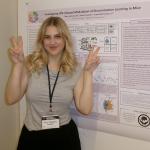
Ph.D. Neuroscience, Stanford University
B.S. Mathematics, Purdue University
B.A. Psychology, Purdue University
Research Interests
How Does the Brain Work?
How does the brain work? Most neuroscientists, including us, became interested in studying the nervous system because of this question. In our laboratory, we reframe this question as: How does an animal gather and process information, make a decision, and act on that decision? It is on this question that our laboratory is attempting to gain insight by examining how an animal performs a decision making task. One example of such a task is detecting a sound embedded in a complex series of sounds and responding to receive a reward.
Optimal State for Neural and Behavioral Performance
One of the first things we noticed was that the ability of animals to perform the task varied rapidly (seconds) and continuously, even though the animals were clearly awake the entire time. We imagine this is similar to either “seminar behavior” where your attention on the lecture waxes and wanes periodically, or “drowsy driving”, where you periodically lose focus on the task at hand. By measuring brain state electrically, and measuring the diameter of the pupil, we found that there is an optimal state for performance of the task, and that this optimal state occurred when the animal is “in the zone”, meaning exhibiting neither too little nor too much arousal. We are now examining the precise neural circuits (e.g. acetylcholine and norepinephrine) that may be responsible for the determination of this optimal state for performance.
Cortical Coding Efficiency:
Stimulation of the cortex with natural stimuli, particularly in the waking, attentive state, gives rise to highly efficient and reliable neuronal responses. We are examining the mechanisms underlying this efficiency and reliability.
Neural Circuits of Brain Processing:
By examining how neurons operate electrically, and how they talk to each other chemically, we are uncovering the neural circuits responsible for behavior. We are particularly interested in the neural circuits that transforms a sensory input into a decision that is then implemented in an action. We find great hope that revealing these neural circuits will increase our understanding of not only the ordered, but also the disordered, human brain.



















